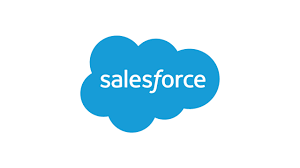Technologies have evolved at an impressive speed, transforming sales and customer management...
How AI Orchestration Helps Businesses 💰
The business world today moves at lightning speed. And amid all this chaos, AI orchestration has become something like the magic wand for success. This orchestration is changing the game for businesses everywhere.
It’s no longer enough to have a bunch of smart programs working individually. The key now is to make them work as a team and align with your business. You’d be surprised how this approach can revolutionize your way of working. Ready to find out what it’s all about? Well, let’s begin!
Definition and Basics of AI Orchestration 😎
AI orchestration aims to make a variety of AI systems and tools work together for the organization. The goal is to get the most out of the AI systems you have in your company.
Today, many companies have a zoo of AI tools. They have a robot to handle customer service, another that’s great with sales, and another that's a wizard at managing inventory. The problem is that these programs often work on their own without sharing what they know or coordinating with each other.
And that’s where AI orchestration comes in. It creates a space where all these systems can communicate and work as a team. The result: AI workflows that run like a Swiss watch and decisions that take the full picture into account.
But it’s not just about getting the machines to understand each other. It also ensures that all this technology aligns with what your company wants to achieve. In other words, AI systems not only need to work well together, but they must also effectively contribute to the organization’s goals.
Differences Between Traditional AI Applications and AI Orchestration 📈
Traditional AI applications are like specialists: they excel at their subject but aren’t very social. They do their job superbly, but they don’t interact with the company’s other systems. It’s like having a team of geniuses who don’t know how to work together.
On the other hand, AI orchestration is like a coach who knows how to bring out the best in every player and make the team shine. It’s not satisfied with each application doing its job independently. Its goal is to make all AI systems function like a well-oiled team.
A great advantage of orchestration is that it adapts and grows with your company. While a standalone AI application might fall short as your business grows, an orchestrated system evolves with you. It can handle new challenges and increasing amounts of data.
This process also helps companies get more value from the technology they already have. Instead of replacing existing systems, it integrates and improves them. This means you can continue using the tools you’re familiar with, but now they will work better with the rest of your infrastructure.
Key Components of AI Orchestration in Business Environments 😎
For AI orchestration to work well in your company, you need certain basic elements. Together, these processes form an AI system that operates in a coordinated and efficient way.
Process Automation
One of the pillars of business AI is automation. It’s used to handle repetitive tasks and complex processes without a person needing to monitor them constantly. This frees up time and resources to focus on more important matters for your business.
Integration
Another key element is AI integration. Orchestration connects different AI systems and applications, allowing them to share information and work as a well-coordinated team. This integration is essential and forms a core part of orchestration. That way, all systems can align with your business’s overall vision and goals.
Management
Let’s talk about management, another important piece of the puzzle. AI orchestration comes with a toolkit to monitor and control your AI systems. Thanks to this, you can spot problems on the fly and fix them before things get complicated. This ensures your AI systems are always operating at their best.
Cloud and APIs
APIs and the cloud are the technologies that provide the necessary support for orchestration to work smoothly. APIs allow different systems to communicate with each other, while the cloud provides the processing power and storage needed. Without these two technologies, orchestration as we know it wouldn’t be possible.
Benefits of AI Orchestration for Operational Efficiency 💰
Implementing AI orchestration in your business is like giving it a boost: it brings numerous benefits, especially in how things work day-to-day. Here’s how this technology can help your business stay on track:
- For starters, it puts an end to those boring and repetitive tasks no one wants to do. This process automates a lot of things you used to have to keep an eye on constantly. For example, it can manage how information flows between your company’s different AIs on its own.
- Additionally, decision-making becomes much easier. Imagine gathering data from several AIs in your company, analyzing it thoroughly, and—bam!—you have a super clear view of what’s going on. With that, you make smarter, more strategic decisions.
- And check this out: it optimizes your resources like a pro. The system is smart enough to know where to apply more power at any given time. This way, no system gets underutilized or overloaded. Not only does everything run more smoothly, but you also save money.
Here’s a bonus: as your business grows, you can add new AI tools and systems without everything falling apart. AI orchestration ensures that everything continues to flow smoothly.
Boosting Business Performance Through AI Orchestration 📈
AI orchestration not only makes your company run like clockwork but also gives your entire business a boost. Let’s see how this technology can help you:
- First, your customers will be delighted. By gathering information from all sources about them, you’ll understand what they want almost before they do. The result: a personalized service so good they’ll think you’re reading their mind. Your customers will be so happy they won’t want to leave.
- Then there’s the innovation aspect. You can create innovative solutions for your business problems. For example, combine predictive analytics with natural language processing and—boom!—you’ve got marketing strategies that hit the mark.
- And let’s not forget about risk. AI orchestration gathers data from everywhere, analyzes it in real-time, and alerts you to problems before they arise. This is especially valuable in sectors like finance or insurance, where a mistake can cost a lot of money.
This process helps you stay ahead of the curve in a rapidly changing market. Since you can adapt and update your AI systems instantly, you respond to market changes almost immediately. And in today’s digital world, that’s pure gold.
AI Orchestration Use Cases in Marketing and Sales 🔔
The orchestration of intelligent systems is revolutionizing how companies approach marketing and sales. Let’s look at some specific examples of how you can use this technological magic in your business.
Improving Sales Efficiency
In sales, this process helps you stay one step ahead of your customers. Imagine combining data from your AI-powered CRM, purchase history, and what your customers do on social media.
Suddenly, you start to see patterns that tell you when a customer is about to pull out their wallet. And not only that, you can have an AI agent analyze these patterns and instantly adjust your sales tactics to increase your chances of closing the deal.
Marketing
As for marketing, AI orchestration allows you to create campaigns so personalized that your customers will be amazed. For example, it can combine demographic data with purchase preferences generated by an AI agent. Then, use another AI agent to craft marketing messages that connect with your audience like they're best friends.
And all of this would be done automatically, with unprecedented coordination and communication between both AI agents. Even if you already have this AI microsystem in your marketing department, you can integrate it with sales, storage, billing, or all of them.
Implementing AI Orchestration in Customer Service 💪
Customer service is another area where the orchestration of AI systems makes a big difference. This technology helps deliver faster, more personalized, and efficient service.
Integrating AI Chatbots with AI-Powered CRM
One of the most common applications is integrating AI chatbots with AI-driven customer relationship management (CRM) systems. The orchestration process allows the chatbot to access all relevant customer information in the CRM.
This enables the chatbot to provide more accurate and personalized responses. If the chatbot can’t solve a problem, it can smoothly transfer the conversation to a human agent, along with all the relevant information.
In this chatbot-customer interaction, data will also be generated that feeds into the CRM. It’s a positive symbiosis between both systems that benefits both the customer and the company.
Problem Prediction
Another interesting use is predicting problems before they happen. AI orchestration allows the analysis of patterns in product usage data, collected from various AI systems. For example, the AI-powered CRM service history and customer feedback from the chatbot. With this, you can assign another AI agent to analyze this integrated data and identify potential problems.
This AI agent could automatically take steps to improve customer satisfaction and reduce service calls. It would also feed data back into both the AI-powered CRM and the chatbot as part of their synergy.
It can also help you optimize your customer service resources. By analyzing call volume data and resolution times, you can better anticipate demand and allocate your staff more efficiently.
Challenges and Solutions in Adopting AI Orchestration 😎
By now, you’re probably convinced that AI orchestration is amazing, but don’t think its implementation is a walk in the park. Don’t worry, though—I’ll walk you through the main headaches and how to solve them.
Complex Integration
The first issue is the complexity of integration. Many companies have systems that do their job very well but are unable to communicate with each other. The solution? Use integration platforms or middleware. These tools can translate data between different formats and protocols. This way, communication between tools and applications is easier, and information flows smoothly from one side to the other.
Data Security
Another common challenge is data security. When integrating multiple systems and sharing data between them, the risk of security breaches increases. To address this, it’s essential to implement robust security measures, such as data encryption and multi-factor authentication. In addition, continuous system activity monitoring should be employed.
AI Scalability
Then there’s the issue of AI scalability. The solution here is to rely on cloud-based orchestration systems. These cloud solutions allow you to add or remove AI applications as needed, without having to change or adjust anything.
Storage space, program load—none of that will be a problem with cloud technology.
Darwin AI: Your Ally in the AI Orchestration Revolution 💪
AI orchestration is rapidly changing the business landscape, and you can get on board. With Darwin AI, you have access to AI agents that interact with each other and integrate with your CRM.
Darwin AI gives you the tools you need to grow your business exponentially. Don’t let your company get left behind. AI is the future, and that future is already here. With Darwin AI, you can leap into a new era where your company is highly efficient and leads its industry.
Are you ready to see how AI can make your business take off? We invite you to try Darwin AI. Discover how this technology can transform your company and take it to the next level. Contact us today!





